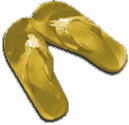A More than Bread
In Bergen-Belsen, 1944, a starving Jewish boy discovered a tiny crack in the camp fence. On the other side, a German farm girl appeared every day pushing a small piece of bread through the gap to keep him alive.
Decades later at a Holocaust remembrance ceremony the boy recounted the girl’s courage and the bread that saved him. A woman in the audience began to cry. She stood and whispered, “I was that girl.”
They embraced for the first time. In that moment, the bread became more than food; it was a bridge across time, a testament to bravery, compassion, and the enduring power of human connection.
 It is no accident that Jesus set up the Church to contain and perpetuate the sacred act of the Eucharist which he still shares with us. This gift from God is not meant for one church only,
It is no accident that Jesus set up the Church to contain and perpetuate the sacred act of the Eucharist which he still shares with us. This gift from God is not meant for one church only,
The Eucharist is the greatest challenge of our Christian Community. “The fact that there is only one loaf means that, though there are many of us, we form a single body because we all have a share in this one loaf” (1 Corinthians 10:17).
In 2022 the U.S. the Catholic bishops began a three-year National Eucharistic Revival to inspire, educate, and unite the faithful in a more intimate relationship with Jesus in the Eucharist. We are challenged to that unity Christ prayed for the night before he died.
The Spirit is working. Where formerly a majority did not believe in the real presence of Christ in the Eucharist, today two-thirds of U.S. Catholics believe in the real presence.
In La Rochelle, France, Easter 1461, twelve-year-old Bertrand Leclerc, mute and paralyzed for five years as a result of a fall, was attending Mass with his mother Jeanne.
At the moment of Communion, he made it clear that he too wanted to receive the Body of Christ, and knelt down to receive. After distributing Communion to everyone else, the priest yielded to the insistence of the child and gave him the Eucharist.
As soon as the host touched Bertrand's mouth, his body began to tremble. A powerful heat traversed his body as if it was coming back to life. He moved his hands, arms and legs. He was healed, suddenly and permanently.
The purpose of this column is not to enumerate Eucharistic miracles. On-line search lists more than 138,000 results including four miracles from the twenty-first century in Buenos Aires, India, Poland and Mexico. Books have been written about Eucharistic miracles, including the lives of saints.
In his Homilies for Everyday Life Fr. Rudolph Novecosky talks about the Easter Story using a duck analogy. Imagine, he says, you hatch duck eggs in an incubator. When the baby ducks are one day old you put them in a brown cardboard box.
Baby ducks do not quack; they peep. Imagine telling these ducklings, “One day you are going to go “quack, quack!” They wouldn’t understand. Imagine telling them they will swim in a big pond. All they know is a small pan of water.
Next you tell them one day they will fly high in the air at sixty kilometres per hour. They do not have the wings or the imagination to understand. Flying would be an utter mystery.
Our lives here are in the brown cardboard box. One day we will rise from the dead. We cannot reach our destiny here. When we leave the box we will enter our true home, heaven. The resurrection will no longer be a mystery to us.
(586 words)

